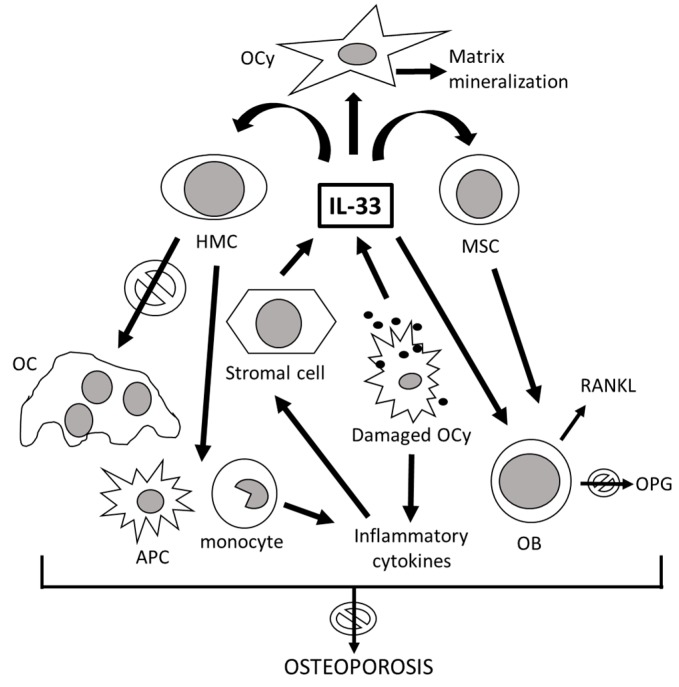Figure 2.
The role of IL-33 in bone remodeling. After inflammatory stimulation, the stromal cells produce IL-33, which directly blocks osteoclast (OC) formation from hemopoietic myeloid cells (HMC), shifting the osteoclast precursor differentiation towards cytokine-producing macrophages and antigen-presenting cells (APC). Damaged osteocytes (OCy), in addition to inducing inflammation, also release IL-33, which in turn stimulates the mineralization of the bone matrix. IL-33 acts directly by stimulating mature osteoblasts (OB) and their bone marrow progenitors, the mesenchymal stem cells (MSC), inducing their differentiation and maturation. Despite the production of the receptor activator of nuclear factor kappa-Β ligand (RANKL) and the partial blockage of the production of osteoprotegerin (OPG) by activated osteoblasts, the prevalent effect of IL-33 on the skeleton is anti-osteoporotic. Arrows with “forbidden” signal mean that il-33 has anti-osteoporotic activities.

